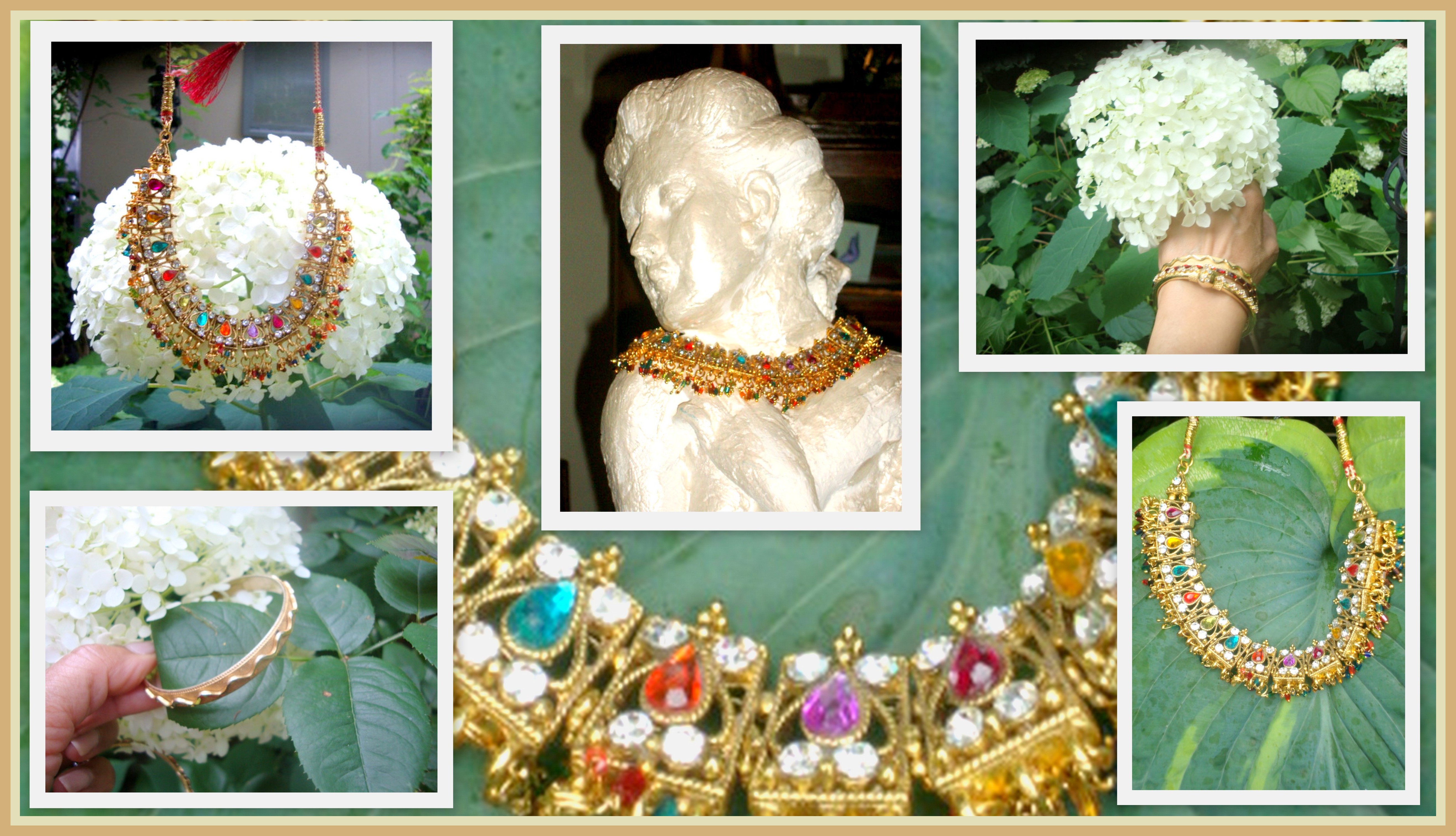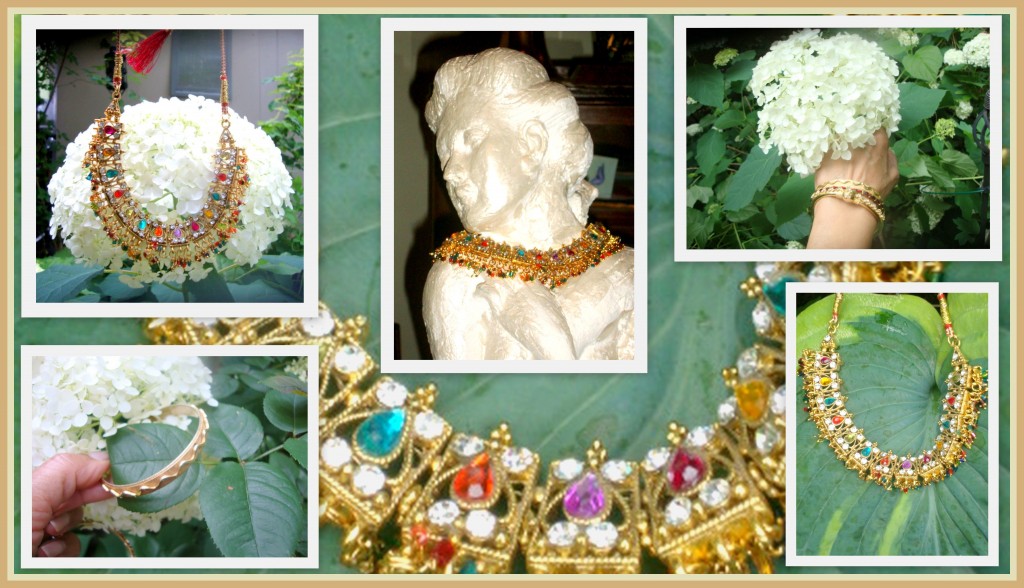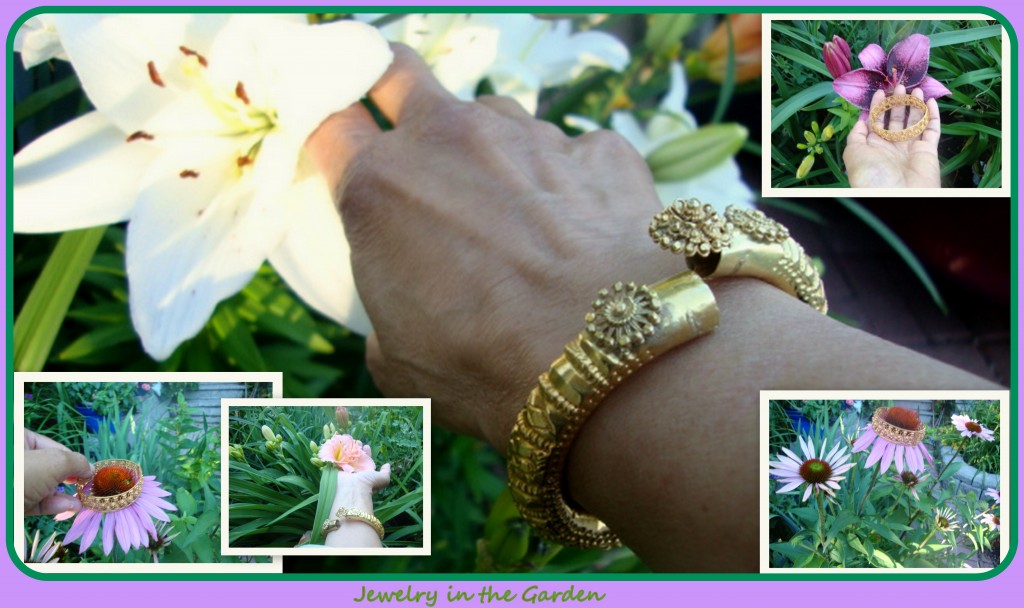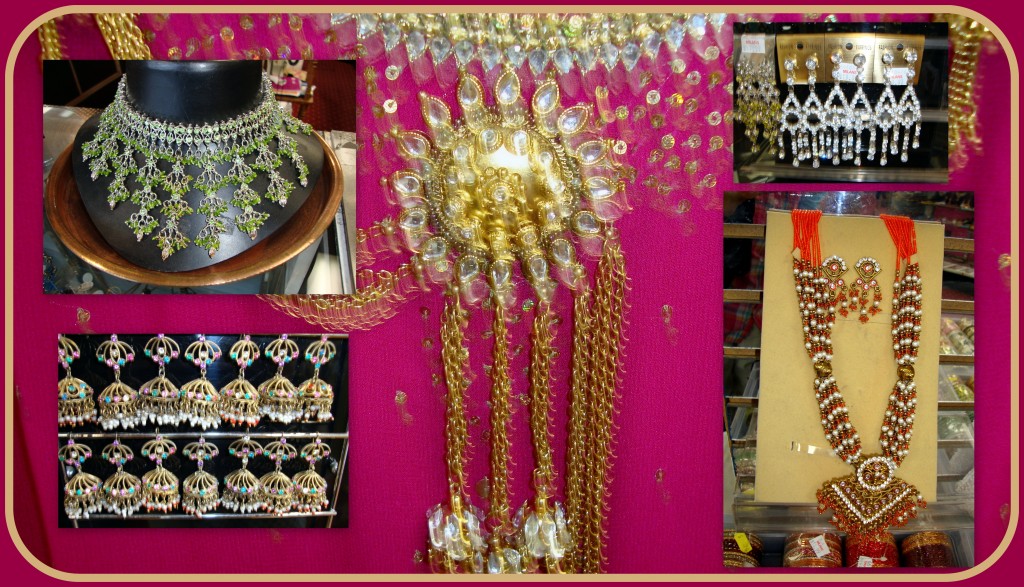
Women all over the world from time immemorial have loved to make themselves beautiful through adorning themselves with jewelry. This is even truer of East Indian women. They wear jewelry everywhere – in their hair, in their noses – and I’ve even seen older women wear bangles on their feet when I was a little girl.
There’s a long history behind this as I discovered while doing this post: “ You will be surprised to know that the history of Indian jewelry goes back to almost 5000 years. Since pre-historic times, people in India have had a penchant for adorning themselves with jewellery. Gold, silver, stones, gems, etc. were the defining aspects of Indian jewellery. The Indian jewelry is varied in styles and designs in accordance to the different regions. Different states have different styles of Indian jewelry that are unique to that state and are not found anywhere else. For instance, the delicate filigree work in silver is unique to Orissa and Andhra Pradesh; the Meenakari (jewelry enameling work) is popular in Rajasthan; the temple town of Nagercoil in south is famous for its famous temple jewelry; Delhi is famous for its Kundan jewelry and so on. Indian jewelry has a variety of ornaments in different styles and designs for just about every part of the body. In ancient times, people used to adorn themselves with necklaces, rings and anklets made of crude stones and other metals. As time passed by, people learnt the art of polishing metals like gold and silver and learnt to extract semi-precious stones and gems from the mines. As various ruling empires came, the rich kings wore jewelry that made them look like Gods. Every big and small piece of adornment was made of gold and precious stones like rings, earrings, bangles, chains, crowns, anklets, etc.
India has been ruled by different empires over the past many years. All these empires have left an indelible mark on the jewelry styles as well. The Mughals gave their distinctive style of using precious stones and intricate carvings, the Rajputs had their enameled jewelry and so on. In the modern world, though new and sophisticated styles have emerged to cater to urban centers, the traditional style of jewelry is still in vogue and is usually the first choice in jewelry. In the contemporary Indian market, you will find a beautiful blend of traditional and modern jewelry in gold and silver that are decorated with gorgeous precious stones that never fail to attract and amuse buyers.”
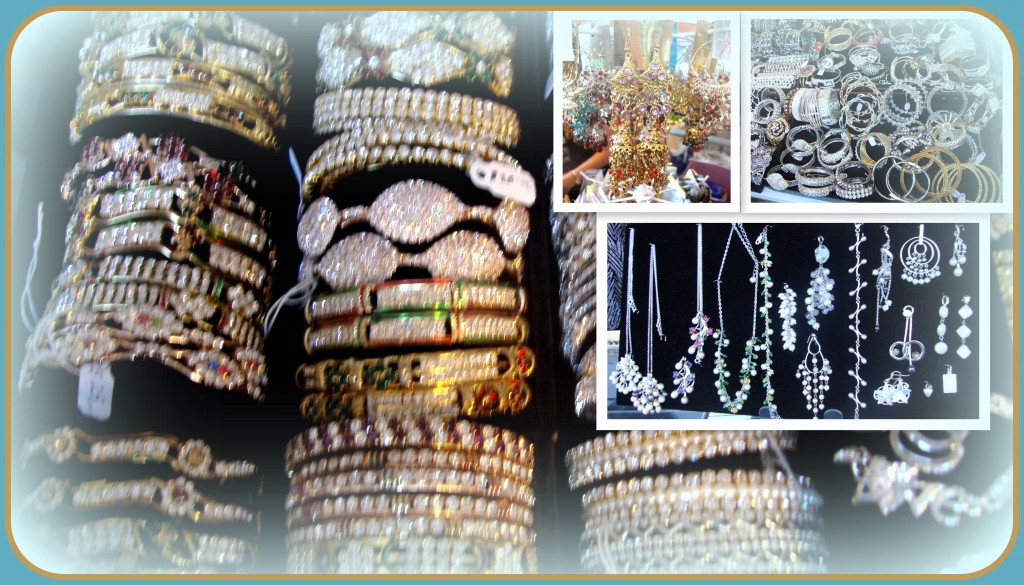
Gold and silver jewelry are lovely to own and wear but a lot of East Indian jewelry is costume jewelry. They are imitations of the real thing. The images in the first collage were taken in Toronto’s Little India area. There are fine jewelry stores there selling gold and silver jewelry as well as the stores selling saris, lenghas, and costume jewelry. It’s always fun to visit this area.
In my own little private world inside of me, I love beautiful things. I have been fortunate to have been gifted with many beautiful pieces of gold and silver jewelry given to me by my parents. Over the years of travelling, I have collected my own special pieces from many different areas of the world. What I am most passionate about, however, are flowers.
So I thought, why not combine my love of beautiful jewelry with my passion for flowers. My last two collages are out in the garden with a few pieces of my own East Indian jewelry. Hope you like the combination!
This necklace was bought in India where I was fortunate enough to be invited to attend a wedding. The background image shows the necklace resting on a large hosta leaf. Isn’t it beautiful?
In the above collage, I hung the necklace on a branch that was close to these red flowers that are now in bloom. I was curious to see how this photo-shoot would turn out. “I have no special talents. I am only passionately curious.” -Albert Einstein
Reference – Iloveindia (Internet)

